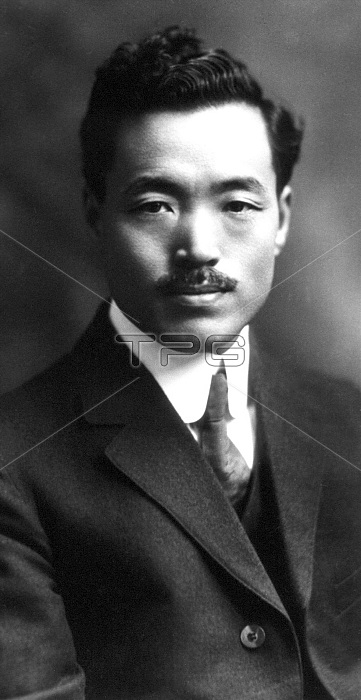
Hideyo Noguchi (1876-1928) was a prominent Japanese bacteriologist. When he was a toddler he fell into a fireplace and suffered a burn injury on his left hand. After surgery he recovered about 70% mobility and functionality. Noguchi decided to become a doctor to help those in need. He passed the examinations to practice medicine when he was twenty years old in 1897. In 1900 Noguchi moved to the United States. His move was motivated by difficulties in obtaining a medical position in Japan, as prospective employers were concerned about the impact the hand deformity would have on potential patients. In a research setting, this handicap became a non-issue. In 1913, he demonstrated the presence of Treponema pallidum (syphilitic spirochete) in the brain of a progressive paralysis patient, proving that the spirochete was the cause of the disease. His name is remembered in the binomial attached to another spirochete, Leptospira noguchii. In 1918, Noguchi traveled extensively in Central America and South America to do research for a vaccine for yellow fever, and to research Oroya fever, poliomyelitis and trachoma. In 1928, Noguchi traveled to Africa to confirm his findings, to test the hypothesis that yellow fever was caused by spirochaete bacteria instead of a virus. Sadly, he contracted yellow fever and died on May 21, 1928. He was 51 years old. Though he never won a Nobel Prize he was nominated in 1913-1915, 1920, 1921 and 1924-1927.
| px | px | dpi | = | cm | x | cm | = | MB |
Details
Creative#:
TOP22160535
Source:
達志影像
Authorization Type:
RM
Release Information:
須由TPG 完整授權
Model Release:
No
Property Release:
No
Right to Privacy:
No
Same folder images:

 Loading
Loading